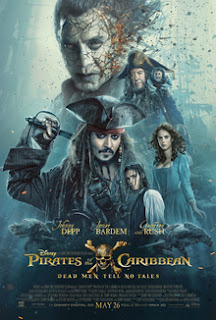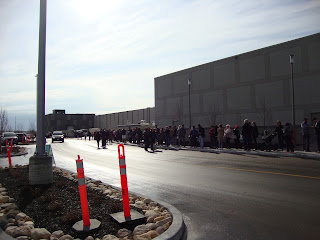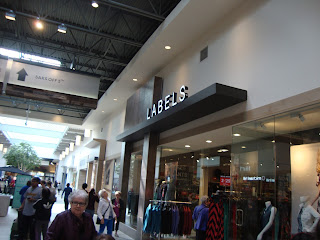I lived in Japan from 1989 to 1992 working for the Japanese government as a teacher just outside Tokyo. It was a time when Japan was flexing its economic muscle and Japanese businesses were acquiring U.S. and international companies and real estate with a soaring yen. Several movies from Hollywood reflected the fears Americans had about country such a Gung-Ho with Michael Keaton in 1986, Black Rain starring Michael Douglas in 1989 and Rising Sun starring Sean Connery in 1993. Sony acquired Paramount Studios in 1989 and Panasonic acquired MCA, owner of Universal Studios in 1990 which only added to the Paranoia that Japan was taking over the world.
It was into this maelstrom that I was dropped and it was rather exciting times. I was the first foreigner based where I was even though I was about 90 minutes by bus from Tokyo. It didn't take me long to discover that the hunger for cultural exchange had exploded and Japanese people were consuming anything and everything they could from outside their borders. The trade imbalance weighed heavy on the government as manufactured goods like cars and steel piled up in the ports to be sent to America.
One thing that Japan did start to buy in quantity was western entertainment. Tokyo Disneyland and Hard Rock Cafe had opened only six years before I arrived. McDonald's and Coca cola were everywhere. Hollywood movies were huge and Star Trek was dubbed into Japanese on TV. As exotic as Japan was, all the touchstones of North American life abounded including 7/Eleven (also owned by the Japanese).
My furnished apartment had most things but among other things lacked curtains, alarm clock, TV and a ghetto blaster (or as Japanese said CDCasseteRadio). The curtains came in handy as there was no daylight saving and the sun already bright at 4:30 AM. My radio was generally tuned into the Far East Netwok (FEN) of the Armed Forces Radio. Nearly 50,000 U.S. military were and still based in the country. I was able to pick the signal from nearby Camp Fuji where the Marines were based.
In retrospect I should have bought a bilingual TV and then could have watched some TV series and Hollywood movies with the flip of a button that shut down Japanese dubbing. It forced me to learn the Japanese language though. In a pinch, the TV English signal ran on an FM frequency and I would turn the TV sound down and the radio up to watch movies. Not that I needed to do that much, however.
Rental video and audio jobs were in abundance just as they were in North
America in mom and pop shops and large format stores as
well. I did not lack for anything in Hollywood movies. It was shortly after I arrived in Japan that the international version of what was to be a TV series from the States was released. Strangely enough, it was packaged as a stand alone movie with an 20 extra minutes featured never seen in the U.S. or Canada. This special release became a cause celebre since despite rabid interest in the unseen footage, it was not made available in North America until 2007.
One of the things I bought in addition to my TV was a VCR and I quickly got to know where three or four video stores were. I believe the business was peaking just as it had been in North America. In 1980, you could find few video rental stores in Winnipeg but by 1982, it was the gift to get at Christmas despite being pricey at around $600 plus. The release of Star Wars in 1982 opened the floodgates.
And so it was in 1989 in Japan. There were a few mom and pop stores near my home high above Tsuru University. I'd rent at least one movie a day after my work day. At the time I walked everywhere and would get dinner at the store or a variety of the restaurants around the college. Hoka Hoka Tei was a fave for box dinners.
Movies were in English with subtitles. Like in North America, fresh material was coming in all the time. It was tough for small stores. I found I went through their cassettes quickly and moved on to other stores. In the years I was there, a few of the smaller stores closed and bigger ones opened. I got a scooter and was soon going to J-Mart about 20 minutes down the road driving.
I don't recall any TV series being released for VCR. It wasn't even a thing in North America until a show like Seinfeld came out. However, the release of David Lynch's pilot as a movie with 20 minutes extra footage in 1990 was something I rented as soon as I saw it.
My reaction to the special edition pilot was sheer joy as well as horror. My reaction *every* single time to the alternate closed ending is shivers down my spine. Essentially, everything from the pilot remains the same except Laura Palmer's mother remember seeing the the killer at the foot of Laura's bed hiding! The scene repeats a few times and it is only as she is absently scanning the room that we see Bob, the long haired killer!
Agent Cooper staying at the hotel is awakened by Mike, the one armed man who tells him to meet him at hospital. The next call comes tell him of the news that the Sarah Palmer saw Laura's killer. The Sheriff and Cooper head to the hospital where they find Mike who tells the pair where to find Bob.
I don't want to give away too much for anyone who has never seen the alternate ending. However, it ends with the a post-script of 25 years later when Agent Cooper as an old man sits in chair in the Red Room (Black Lodge) where a little man and Laura Palmer sit opposite. The scene end with the little man dancing after Laura kisses Agent Cooper and whispers who killer her in his ear.
Colour me gobsmacked. Those of us in Europe and Japan saw this version even before episodes stated to air in North America. For Europe, most only saw this pilot and only much, much later saw the TV series. Meanwhile in Japan, fans were frantic for more.
There was no Internet back then. Like everyone else, I read about the series in the media in Japan. I had the selection of four different daily English newspapers to read in 1989. I chose the Japan Times. I also visited Kinokuniya Bookstore in Shinjuku where an entire floor was dedicated to English books, magazines. It is where I picked up the Economist each time I was in the city. It was during a visit into city that I came across the information of the Twin Peaks series.
In one of the hundreds Japanese pop culture magazines that would line any Daily Store or Let's Kiosk stand was the bold headlines that VHS tapes would be released for rent, two episodes per take as quickly as they could have subtitles added. In other words, pretty fast. I hungrily rented each tape which would come to number 14 when all was said in done.
Like many in Japan I was stunned by the pilot and second episode. Everything was good till second episode and then I was asking: But what about Mike? What about Bob? I was confused. So were many Japanese but it didn't stop people from viewing the series with anticipation. I didn't fully appreciate what the extra 20 minutes of footage meant until I bought the pilot tape and brought it home on holiday. People went nuts. Some hated it and thought it was a fraud. Others loved it. No one was neutral.
In 1990 the Japan Satellite Broadcasting (now Wowow) began a free preview for 12 hours a day featuring such TV series as Tour of Duty. Wowow eventually became the home to the Twin Peaks TV series when it switched over to full pay TV in 1991. It was Japan's first pay channel and Twin Peaks helped cements its reputation.
The series was cancelled as everyone knows after two seasons but David Lynch was not done. It was off to the movies for the series and Twin Peaks: Fire walk With Me was produced in 1992. It did not premiere in the U.S. In a turn of events based on the most rabid of fanbases, Fire walk With Me was released in Japan first. It was an enormous box office success in Japan. Not so much in the U.S.
The bar scene in Fire Walk With Me was filled with loud bar music and English subtitles were replaced with Japanese ones. Let's just say that Japanese subtitles can leave you confused compared to what the actual dialogue is. It was only when I rented the movie in North America that I saw the actual dialogue of that scene. My biggest disappointment was the reduced role of Kyle MacLachlan and absence of Lara Flynn Boyle (Donna Hayward) and Sherrilyn Fenn (Audrey Horne). Moira Kelly did her best with replacing Boyle as Donna but it was a difficult casting.
In the summer of 1992, Japan was still going crazy for Twin Peaks. I was headed back home after years in Japan and like so many Japanese I decided I had to go the the state of Washington and see where they filmed the series. Armed with books and magazines of the series that I bought at Tower Records in Shubuya, I planned to meet family in Los Angeles after a layover in Hawaii (where I was hospitalized for a bite on my foot by a shark which is story for another day).
From LA (and visits to Disney, Universal, Knott's Berry farm, etc) and all the way up the Pacific Coast, we made our way to Snoqualmie, Washington and North Bend. I saw the railway bridge, the rail car, the Great Northern and the 270 foot falls and to top it off I ate at the Double R Diner.
The town on Snoqualmie knew they were onto a gold mine. Tons of Japanese toured the town and there was groups all over with guides including translated material. Everywhere you went, people were sightseeing in that August of 1992. And yes, I had cherry pie and sat in the very seats of my favourite characters and many said it was damn fine coffee.
It was quite the trip and I think I might be the only one I know of fans in Winnipeg who loved the series who actually went to the filming location that year the movie came out. In retrospect, it was something I was a little embarrassed about. However, I experienced the series as rabidly as the Japanese did and ended up doing what many of them in touring the locations.
As an addendum: As we were driving out from Redmond, Washington, I saw film crews and was hopeful more Twin peaks were being filed that 1992. Alas, it was the crews from North Exposure which started in 1990 and I'd never seen. Just down the road from Snoqualmie was Roslyn, Washington standing in for Alaska. It is where they filmed the moose wandering around town. I saw the town and how pretty it was and later saw the series and realized where it was filmed. I adored Northern Exposure as well and eventually caught up on the series that I had missed two years of.
To this day I love Twin Peaks but regret is not on network television for its return. I will wait patiently for it but a lot of the buzz for the series will be hard to get back as we consume media much differently now. It is not at same timeframe. Perhaps only Hollywood movies count as event worthy. And yet even there, so much is happening in the world that sometimes that collective reaction is "huh" to everything.
My appreciation of Twin Peaks though was largely shaped by me being a resident of Japan.
Farewell, Olafson House
-
Sadly, Gisli Olafson House at 539 William Avenue was torn down on November
13, 2025 after its fourth fire in three months.
I spent a lot of time at the ...
1 week ago











































































